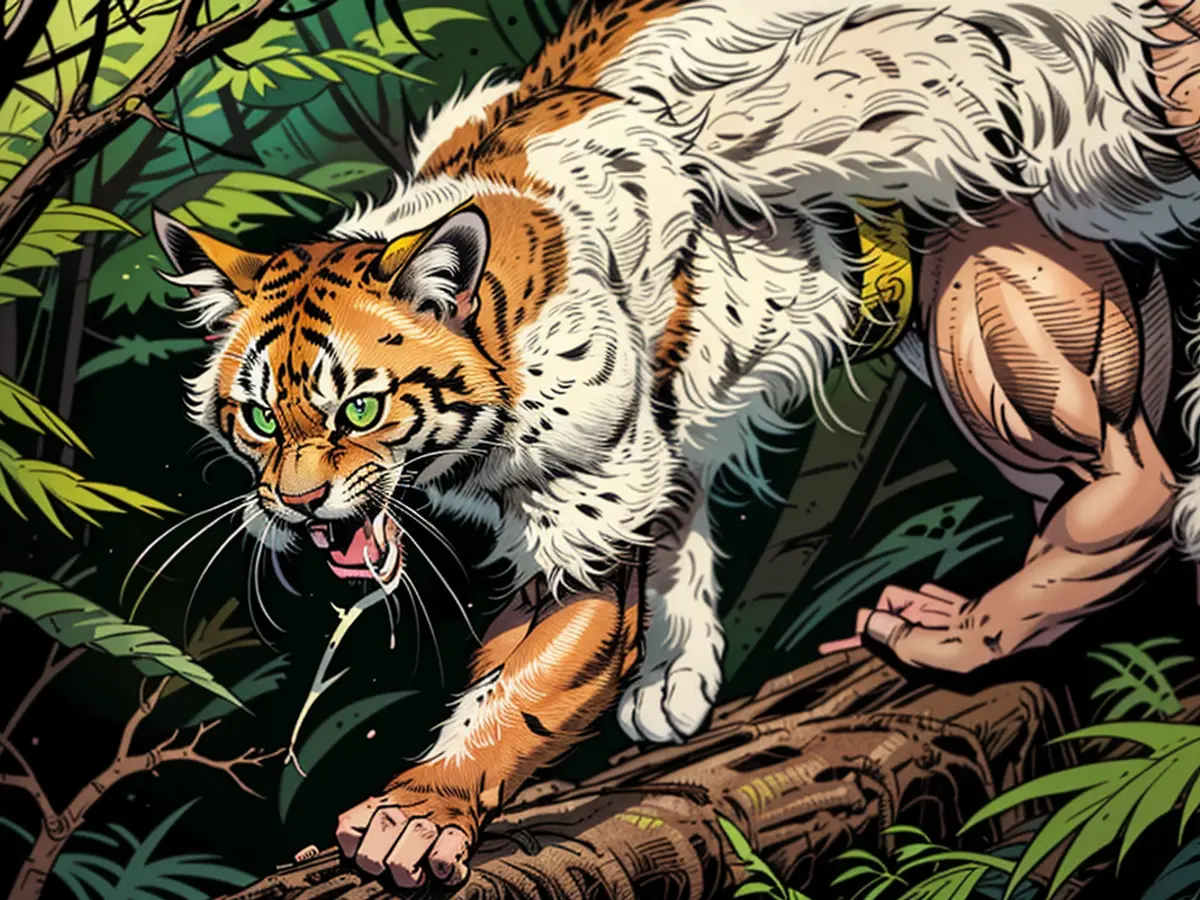Green Corridors - The wildcat reclaims Thuringia
Through Thuringia's forests, hundreds of Wildcats roam once again. Not only the Hainich, but also the Thuringian Forest are well populated, stated Wildcat expert at the Bund für Umwelt und Naturschutz (BUND), Thomas Mölich. Rough estimates suggest that up to 2000 animals could be on the move in the Free State. "That should be measured more precisely", he said.
Twenty years ago, it looked different. The Wildcat was then relatively unknown and threatened with extinction, stated Mölich. In Thuringia, it was strongly bound to the Hainich and did not leave the forest. "They have to wander, otherwise their populations are at risk. Genetic exchange is necessary."
"Rettungsnetz" celebrates 20-year anniversary
The BUND therefore started a "Rettungsnetz" for Wildcats in 2004, which now celebrates its 20-year anniversary. The idea: Forests to be connected via green corridors of bushes and trees, so that Wildcats and other animals can move between them. "The Wildcat needs large, contiguous forest areas", explained Mölich. The nocturnal and shy animal only dares to venture onto open terrain rarely.
The project was initially laborious. It took ten years for the first corridor to stand, and another five years for the first Wildcats to cross. For this, the BUND had to talk to many landowners and invest money. Now, there are 15 such corridors in Thuringia and over 30 nationwide. The Cat is currently regaining territory in Brandenburg slowly but surely.
Currently, the BUND is working on a project where forests are made suitable for Wildcats. "We need more native forests and indigenous tree species", so Mölich. In addition, forest edges should be cared for so that they offer habitats for Wildcats and other species. "It goes well for the Wildcat, it also goes well for other species."
Road traffic demands many victims
However, there are still dangers for the paws, stated Mölich. Traffic is the leading cause of deaths among animals. The hunt is no longer an issue, however.
A new problem is currently emerging in Baden-Württemberg. Wildcats are mating with domestic cats and producing hybrids. There is a risk of loss of genetic identity, stated Mölich. "That is fundamentally a danger. In Scotland, the Scottish Wildcat no longer exists because it has merged into the gene pool of the domestic cat." So far, this issue has not played a role in Germany. "That's a wonder with millions of domestic cats."
- The Wildcat's resurgence in Bavaria could significantly contribute to its population, as the region's vast forests provide ample space for genetic exchange.
- The BUND's efforts in Hesse also involve creating green corridors, aiming to connect forests and protect wildlife migration, including the Wildcat.
- The Wildcat's home range encompasses not only the Thuringian Forest but extends into the neighboring forests of eastern Germany, forming a crucial network for the species' survival.
- The Umweltbundesamt (German Federal Environmental Agency) is collaborating with the BUND in a joint initiative, focusing on conserving and restoring native forests and indigenous tree species in several German states, including Thuringia.
- The presence of Wildcats in the Thuringian Forest has sparked renewed interest in nature protection and leading to increased efforts to preserve and expand forest ecosystems, benefiting other wildlife as well.
- Environmental organizations and governments across Europe are monitoring the impact of hybrids in Wildcat populations, with concerns over the loss of genetic diversity, urging cautious measures to preserve the native Wildcat species in various countries, including Hesse and Thuringia.








